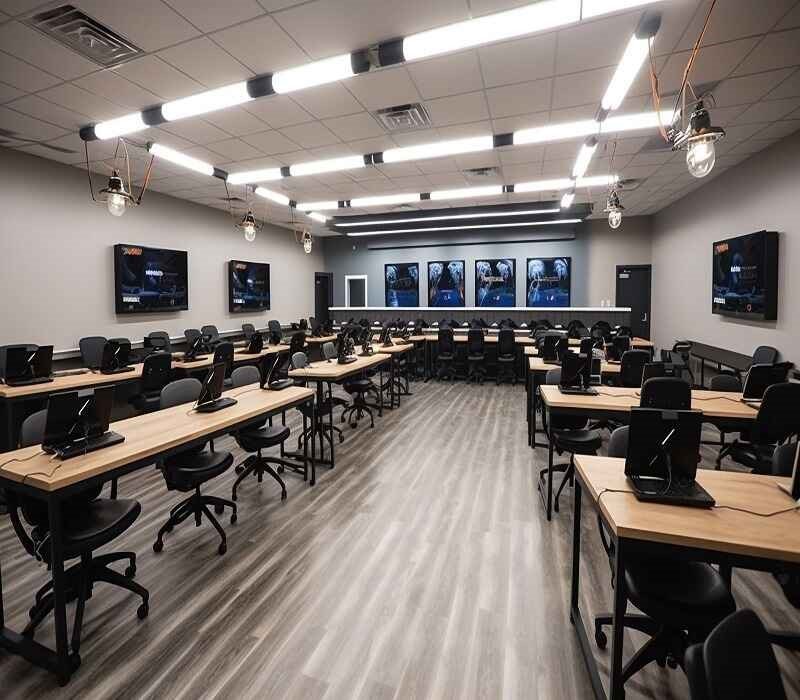Introduction
Learning is evolving rapidly. Those days of students quietly copying notes off a blackboard are gone. Nowadays, learning has to be dynamic, interactive, and adaptive. That’s where Classroom 15x fits the bill.
Classroom 15x is not just another teaching method—it’s a revolution. It blends technology, flexibility, and interactive learning to help students grasp concepts faster and retain them longer. Whether you’re a teacher, student, or parent, understanding this approach can open doors to better education.
In this guide, we’ll explore everything about Classroom 15x: how it works, why it’s effective, and how schools can implement it. Let’s begin.
What Is Classroom 15x?
Classroom 15x is a new learning model intended to improve learning. In a traditional classroom where a single teacher teaches many, this approach makes it personalized. It employs computer-based tools, hands-on training, and adaptive methods to retain students’ attention.
The name Classroom 15x is derived from its very principle—improving learning 15 times more than in traditional ways. How? Through active participation, not passive listening.
For instance, rather than simply reading about science, students may observe a 3D simulation of a chemical reaction. Rather than memorizing dates in history, they may role-play historical events. This way, learning takes hold.
How Classroom 15x Works
1. Interactive Learning Instead of Lectures
Old-style classrooms are dominated by lectures. A teacher talks, students listen (or daydream), and tests measure memory, not comprehension. Classroom 15x turns this on its head.
Here, students learn lessons via:
Videos and animations (complex concepts are visual and easy to understand)
Gamified quizzes (learning is a challenge, not a chore)
Group discussions (students learn from one another, solidifying knowledge)
This makes lessons engaging and ensures that students aren’t merely passive recipients of information.
2. Self-Paced Learning
Each student learns uniquely. Some quickly understand math but are weak at languages. Others take more time to learn science concepts. Classroom 15x adapts to these differences.
Rather than making everyone do the same speed, this approach enables students to:
Replay video lessons if they’ve missed something
Skip ahead if they already know a topic
Take additional quizzes for challenging subjects
It makes them less frustrated and enables them to gain confidence.
3. Real-World Applications
Some students ask, “Why am I learning this?” Classroom 15x provides the answer by making lessons relevant to real life.
For example:
Math problems may include discounts while shopping.
Science experiments might mimic everyday phenomena, like why ice melts.
Language lessons could include writing emails or social media posts.
When students see how knowledge applies outside school, they become more motivated.
Why Classroom 15x Is More Effective
Better Engagement, Less Boredom
Let’s be real—old-fashioned classrooms are dull. A teacher lectures for hours, students space out, and memory suffers. Research indicates that students retain only 10% of what they hear but 75% of what they practice.
Classroom 15x remedies this by engaging learning and making it entertaining. Rather than simply listening, students:
Work on puzzles
Engage in debates
Design projects
This experiential method keeps them engaged and enhances memory.
Instant Feedback for Faster Improvement
In traditional teaching, students wait days (weeks) for test results. By that time, they’ve forgotten what they learned. Classroom 15x gives immediate feedback.
For instance:
Online quizzes display errors immediately.
Teachers monitor progress in real time.
AI tools suggest additional exercises to improve weak spots.
This allows students to fix errors immediately, accelerating learning.
Helps Teachers as Well
Some worry that technology will take the place of teachers. But Classroom 15x enables them instead.
Teachers receive:
Automated grading (saving hours on paperwork)
Analytics dashboards (identifying struggling students early)
Pre-made digital materials (no last-minute frantically finding lesson plans)
These allow teachers to spend what counts—teaching.
Drawbacks of Using Classroom 15x
Even with its advantages, Classroom 15x is not flawless. Schools encounter challenges in implementation.
1. Technological Barriers
Not every school has:
Fast internet
Tables or laptops for all students
Teachers trained in digital resources
Without these, Classroom 15x can’t function.
2. Resistance to Change
Some teachers are accustomed to doing things the old way. They resist:
“Lectures worked for decades—why change?”
“Technology distracts more than it helps.”
Changing this mindset takes training and time.
3. Cost Factors
Digital tools don’t come free. Schools require budgets for:
Software subscriptions
Device maintenance
Teacher training programs
Although Classroom 15x saves money in the long run, startup costs can be high.
Is Classroom 15x the Future?
Evidence says yes. Schools implementing this approach report:
Higher test scores
Lower dropout rates
More engaged students
As technology advances, Classroom 15x will continue to improve. Imagine:
Virtual reality field trips
AI tutors for homework assistance
International classroom collaborations
The potential is unlimited.
Last Thoughts
15x Classroom isn’t a trend—it’s the future of education. By making learning interactive, flexible, and relevant, it prepares students to navigate a rapidly changing world.
Sure, there are challenges. But schools that adopt this model reap a significant payoff. Students learn more, teachers teach better, and education becomes more purposeful.
The question isn’t “Should we try Classroom 15x?” It’s “How soon can we start?”
For more articles; visit our website “blogstrove“.
